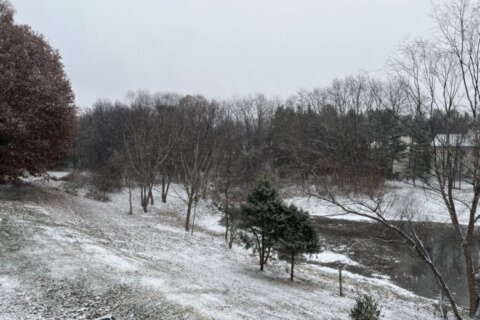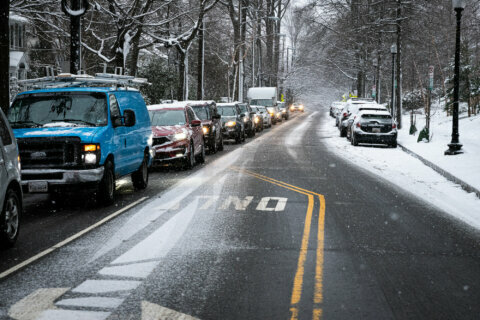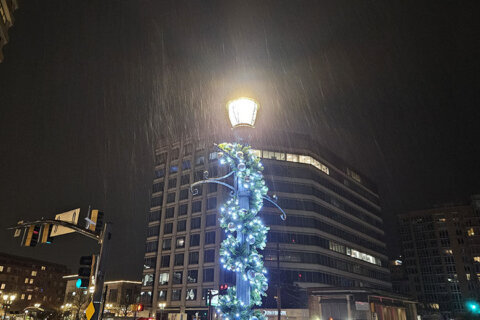A new storm system will arrive on the West Coast this weekend, bringing beneficial rain to northern and central California. Some experts believe the storm could bring enough rain to the region to slow the ongoing fire season.
Against the odds, an early and substantial rain event appears likely for much of Northern California later this weekend, Daniel Swain, a climate scientist with UCLA tweeted. He went on to say the event could lead to the “fire season slowing” across California, at least temporarily.
“If we can get through the Saturday-Sunday southwest wind event, things will likely be looking much better on [the] Mosquito Fire by Monday,” Swain tweeted.
The Mosquito Fire has become the largest fire in California this year, charring nearly 70,000 acres since igniting more than a week ago in the forest between Sacramento and Lake Tahoe.
Firefighters have contained 20% of the 71,292-acre fire, according to a Friday update from the Placer County Sheriff’s Office.
Strong winds are forecast Saturday, which could continue to fuel the Mosquito Fire’s growth before the beneficial rainfall arrives.
Saturday afternoon wind gusts could reach 30 to 40 mph, which will lead to a brief period of fire weather concerns mainly over the ridge tops, the National Weather Service office in Sacramento said.
The heaviest rainfall from the system is likely to occur Sunday through Monday, when widespread rainfall totals of 0.3 inches along the coasts to 3 inches up in the mountains are possible.
To put the unseasonably high rainfall totals in perspective, San Francisco and Sacramento average less than a tenth of an inch of rain for the month of September.
San Francisco last saw rain on August 1, but it was a measly one hundredth of an inch. It has been a dry year for The Golden City with only 1.9 inches of rain recorded since January 1, putting the city nearly 11 inches below normal rainfall so far this year.
The last time Sacramento saw measurable rain was more than three months ago on June 5. They have only seen 2.17 inches of rain this year, which is about 10 inches below normal to date.
September is also the third-driest month of the year for these cities, behind August and July, which lines up with the peak of northern and central California’s fire season of September-October.
A Level 1 of 4 risk for excessive rainfall has been issued for Sunday, across coastal portions of northern and central California, as rainfall rates of a half inch per hour are possible, which could lead to flooding.
“Though much of the rainfall may be beneficial, some isolated runoff issues may occur in urban areas and/or in areas of steep terrain,” the Weather Prediction Center said.
The low-pressure system is likely to linger off the West Coast through early next week, keeping rain chances in the forecast through at least Tuesday.
Rain will not be the only benefit from this storm. Temperatures will also plummet to well below normal through the weekend with highs only in the 60s and 70s for much of central and northern California.
Temperatures may actually be cold enough in the Sierras at elevations above 8,000 feet, for some light snowfall to accumulate Sunday into Monday night.
The National Weather Service office in San Francisco said the weekend temperatures are “definitely a welcoming site given the record-breaking heat much of the area experienced just last week.”
The unseasonable weather pattern is a welcome relief, but it is not expected to last long.
“Warmer and drier weather is then forecast for the area during the latter portion of next week as most [weather models] show high pressure over the Northeast Pacific trying to develop,” the weather service office in Eureka said.
The Climate Prediction Center 8- to 14-day outlook also shows indications of warmer and drier weather returning the last week of September into October.
In the short term, while rain and cooler temperatures this weekend may help with immediate fire containment, long-term drought persists across the state.
“Fuels are still critically dry, near record levels, and a period of warmer, drier weather will likely follow the rain,” the weather service office in Sacramento tweeted. “But the good news is that any rain will help ongoing or new fires!”
Nearly the entire state of California remains under drought conditions and dry conditions are likely to continue to fuel the development of new fires later this month and into October.
“It would take multiple consecutive events like the upcoming one to truly end fire season,” Swain wrote in his blog post. “So, unless there is another significant rain event in the first half of October, I’d expect wildfire risk to gradually ratchet back upward by early-mid October.”







